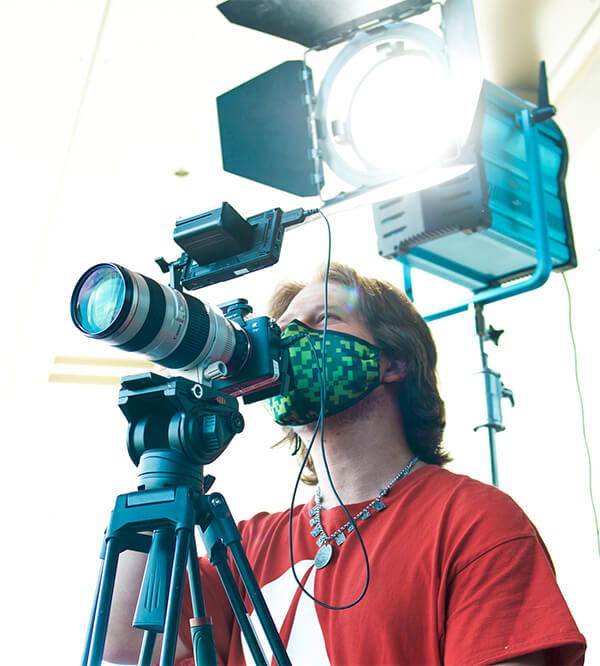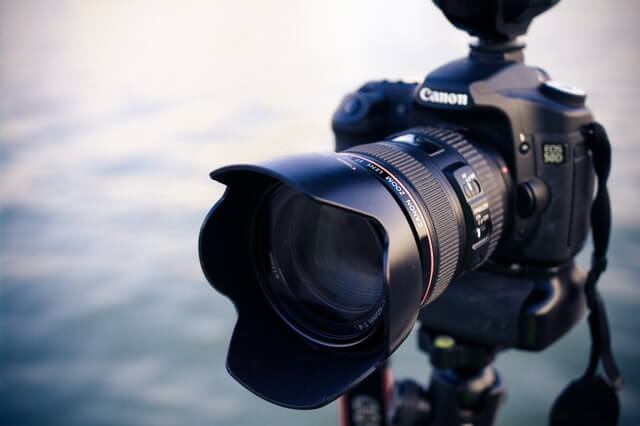- Tips & Tricks
- Jun 13, 2022
5 Ways To Improve Your Social Media Content Photography

Whether you use social media to share things about your day, market your products, or even flaunt your good looks, content creation is an important factor to consider. The heaviest traffic can be found on the Internet — and without the right strategy, your posts can easily get lost in the crowded world of social media.
The statistics can be intimidating. Facebook users are sharing 684,478 pieces of content per minute and each day, there are more than 500 million Tweets processed on Twitter. However, there is a silver lining: Facebook posts with photos receive an average 37% increase in engagement and tweets with photos receive an average 35% boost in retweets.
This is particularly important to remember when using social media for businesses, or in ecommerce photography. Good photographs generate more views and sales, particularly because online photographs are a substitute for the real deal. According to our previous article, this means that online content must look just as good as the subject it captures, if not better.
With the right tools, tips, and tactics, one can inject more personality and style into photos so that they stand out from the crowd. Keep reading to learn these tripleTs and more.
Focus on lighting
Lighting can make or break a picture. However, getting good lighting can be harder than it sounds. Natural lighting is great, but depends too much on external factors such as direction, quality, window light, direct sunlight, and open shade. To maneuver around this, many photographers opt to use light modifiers.
A popular choice is the umbrella, either reflective or a shoot-through, that you can simply attach to your speedlight or a large studio flash. Depending on the size and shape, this can provide you with more control over the lighting, allowing for soft and even achromatic effects on your subject.

With the boom in ecommerce and lighting being crucial to a good photo, it’s no surprise that as the pandemic gave way to an increase of online content, the ring light market saw a drastic growth of US$ 6.9 billion as well. After all, it’s a convenient and cost-efficient source of professional lighting that can be installed even by non-experts in smaller spaces. A ring light is just one of the plenty of lighting options that are accessible even for beginners. As your skills grow you can also opt for more elaborate lighting setups, including professional options for studios.
Upgrade your camera
While phone cameras are accessible and have been steadily improving in recent years, they can’t offer the range of control that digital cameras provide.
Good quality pictures make your posts seem more professional, and the best and most basic way to do this is by investing in a staple camera. Mirrorless cameras like the Sony Alpha a7 IV or Fujifilm X-T30 II are good options because of their fast sensor readout, color accuracy, and low-noise performance. They can even include additional lenses from FE 28-70mm f/3.5-5.6 OSS to XC 15-45mm f/3.5 that can enhance the light on the film or digital sensor in constant aperture.

Because a camera is a big investment, make sure to do your research before buying. Take a moment to consider the following factors as well: lowest-price or best-value; long-lasting or quick-acting; eco-friendly or cost-effective. There are plenty of great choices in the market but only you can determine your photography goals, budgets, and interests and pick the best camera for yourself.
For example, mirrorless cameras tend to be lighter, compact, and better at low light focusing. This is great for outdoor and night shoots, which frequent travelers who want to capture the world without extra baggage could especially benefit from.
Photographers in bigger studios might opt for bulkier DSLRs, and other creatives also like to kick it old school with film cameras. When it comes to finding the right camera, the decision is entirely in your hands.
Maximize framing and composition
While there aren’t strict rules to photography, balance allows you to intentionally draw or redirect attention. This is where a good composition guide comes into play.
You’ve probably heard of the rule-of-thirds. Here, the photograph is divided into 9 equal segments, by 2 vertical and 2 horizontal lines. Important elements in your scene are positioned along these lines, or at the points where they intersect.

Besides that, there are other basic rules in framing: from creating depth by overlapping and and taking advantage of leading lines. There is also the classic alteration of viewpoint — photographing from high above, down at ground level, or very close up — and framing, which isolates the main subject from the outside world.
The principle behind all of these composition tips is creating symmetry in order to make your photo interesting. You can study other photographs to get a hang of composition, and the more you understand these rules the easier it is to play with them.
Use an editing app
The process of producing photographs goes from the pre-production tips listed above, to post-production. This is what makes a good photograph great, and is what allows your product photos and brand to gain more credibility online.
Whether you missed something or simply want to emphasize a detail, photo editing apps can take care of filtering and retouching. For example, when you’re unable to acquire the proper mood lighting during the shoot, there’s no need to start over. With the right app, you can simply choose or customize a filter according to what you want your picture to convey, and apply it with the tap of a finger.

There are several established apps available online for doing just that. Some options range from VSCO, popular among small businesses, to Adobe Photoshop Express, the free and mobile version of Adobe Photoshop. Otherwise, beginners may enjoy Snapseed and its autocorrect feature that adjusts colors, exposure, and contrast to make your photos sharper and more compelling.
Don’t forget about your backgrounds

The background of your photograph can either accentuate or downplay your subject. This is because the human eye is capable of distinguishing between different elements in a scene, whereas a camera has a tendency to flatten the foreground and background.
It is important to select a background that complements your subject and when in doubt, a plain and unobtrusive background is a safe choice. However, photographers can still struggle to find that perfect backdrop, which is why greenscreen usage has steadily been growing in popularity.
Now with recent technology, it’s possible to get the desired effect of greenscreens using software. With Slazzer, advanced computer vision algorithms can remove and replace backgrounds from any image in just a few seconds. This makes the art of photography limitless.
Our standards for photography are constantly changing, but the principles remain solid. It’s on you to study your audience, combine the usage of these tips, maximize the already available resources, and take the best pictures you can.
— Post solely for the use of slazzer.com By JBusby


Comments (0)